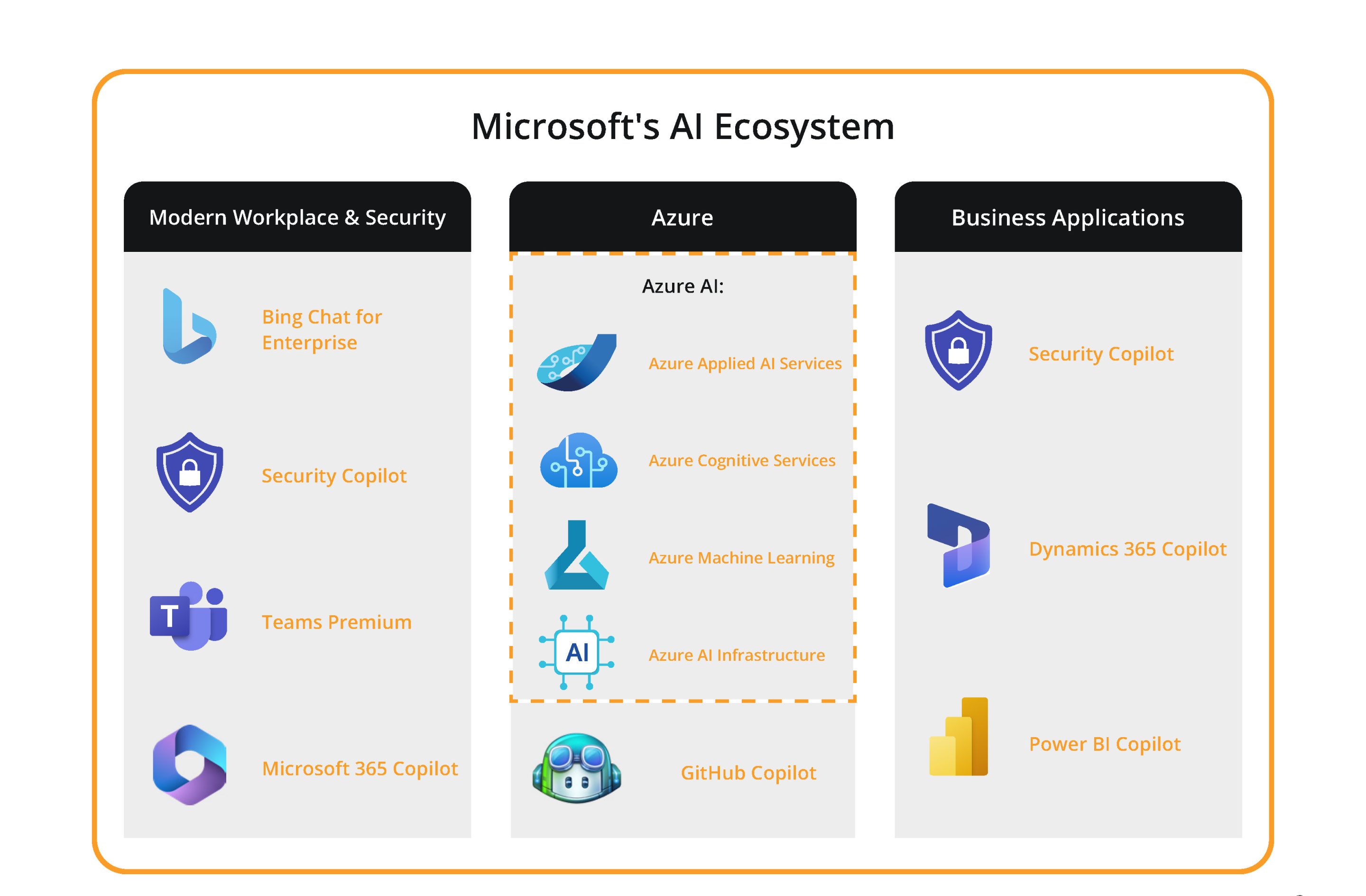Schneider Electric's AI Ecosystem: Driving Innovation And Partnership

Table of Contents
Key Components of Schneider Electric's AI Ecosystem
The Schneider Electric AI ecosystem is built on a foundation of interconnected technologies and strategic collaborations, working together to deliver powerful solutions. Let's delve into the core components:
EcoStruxure Platform as the Foundation
EcoStruxure serves as the central nervous system of the Schneider Electric AI ecosystem, integrating data from diverse sources—from industrial sensors and smart meters to building management systems—for AI-powered analysis and decision-making. Its importance cannot be overstated.
- Open architecture: EcoStruxure's open architecture allows seamless integration with third-party AI solutions and other IoT devices, maximizing flexibility and customization. This interoperability is crucial for businesses with existing infrastructure.
- Scalability and adaptability: The platform is designed to scale to meet the needs of businesses of all sizes, from small industrial facilities to large-scale energy grids, adapting seamlessly to various industry verticals and business requirements.
- Robust data security: Data security and privacy are paramount. EcoStruxure incorporates advanced security features to protect sensitive data throughout the AI processing pipeline, ensuring secure AI operations.
- Edge computing capabilities: EcoStruxure leverages edge computing capabilities for faster processing and reduced latency, enabling real-time responses and improved decision-making. This is especially critical in time-sensitive applications like predictive maintenance.
AI-Powered Software Solutions
Schneider Electric offers a suite of software solutions that leverage the power of artificial intelligence to optimize operations and enhance decision-making. These solutions are built to integrate seamlessly within the EcoStruxure platform.
- Predictive maintenance software: This software utilizes machine learning algorithms to analyze data from connected assets, predicting potential equipment failures before they occur. This allows for proactive maintenance, reducing downtime and extending the lifespan of valuable assets.
- Energy optimization tools: Using machine learning, these tools analyze energy consumption patterns, identifying opportunities for optimization and reducing energy waste. This translates to significant cost savings and reduced environmental impact.
- Advanced analytics dashboards: These dashboards provide real-time insights into operational performance, energy consumption, and asset health. This data-driven approach facilitates informed decision-making and proactive problem-solving.
- Building management system (BMS) integration: Seamless integration with building management systems enables smart building applications, optimizing energy efficiency, comfort, and security within buildings.
Strategic Partnerships and Open Innovation
Schneider Electric's commitment to open innovation is a key driver of its AI ecosystem's success. The company actively collaborates with technology companies and industry leaders to develop cutting-edge solutions.
- Targeted partnerships: Partnerships are formed to develop specific AI-driven solutions tailored to niche markets and unique customer needs, addressing specialized industry challenges.
- Open API access: Schneider Electric provides open API access, enabling seamless integration with other platforms and systems. This fosters a collaborative environment and accelerates innovation.
- Joint R&D initiatives: Joint research and development initiatives with partners fuel innovation and accelerate the development of new AI-powered solutions.
- Extensive network access: Businesses gain access to a vast network of experts and resources, expanding their capabilities and knowledge base.
Benefits of the Schneider Electric AI Ecosystem for Businesses
The Schneider Electric AI ecosystem offers significant advantages for businesses across various industries. These benefits contribute to enhanced efficiency, improved sustainability, and a stronger competitive position.
Enhanced Efficiency and Productivity
AI-driven automation streamlines processes, leading to substantial gains in efficiency and productivity.
- Reduced operational costs: Optimized resource allocation reduces operational costs, leading to significant bottom-line improvements.
- Improved asset utilization: Predictive maintenance and optimized resource allocation contribute to better asset utilization and reduced downtime.
- Accelerated decision-making: Real-time insights from data analytics enable faster and more informed decision-making.
- Increased agility: Businesses become more agile and adaptable to market changes, responding effectively to evolving demands.
Improved Sustainability and Reduced Environmental Impact
The AI ecosystem contributes to more efficient and sustainable energy management, aligning with global sustainability initiatives.
- Reduced energy consumption: AI-powered energy optimization solutions significantly reduce energy consumption, leading to lower energy bills and a smaller carbon footprint.
- Enhanced resource utilization: Optimized resource allocation minimizes waste and promotes more efficient resource utilization.
- Improved carbon footprint tracking: The platform allows for better tracking and reduction of carbon footprint, contributing to environmental responsibility.
- Achieving sustainability goals: The ecosystem supports businesses in achieving their sustainability goals and meeting regulatory requirements.
Competitive Advantage and Innovation
Access to cutting-edge technologies and a vast network of expertise provides a significant competitive edge.
- Faster innovation deployment: Businesses can deploy innovative solutions more quickly than competitors, gaining a first-mover advantage.
- Access to advanced tools and services: The ecosystem provides access to a wide range of AI-powered tools and services, enhancing capabilities.
- Stronger market position: Businesses gain a stronger position in the rapidly evolving energy management and automation market.
- New revenue stream opportunities: The ecosystem opens up opportunities to develop new revenue streams based on innovative solutions and services.
Conclusion
Schneider Electric's AI ecosystem represents a powerful and transformative approach to energy management and automation. By leveraging AI, strategic partnerships, and its robust EcoStruxure platform, Schneider Electric empowers businesses to improve efficiency, enhance sustainability, and gain a significant competitive advantage. The seamless integration of AI across various solutions provides a comprehensive toolkit for addressing the challenges of the modern energy landscape. To learn more about how the Schneider Electric AI ecosystem can transform your business, visit [link to Schneider Electric website]. Embrace the future of energy management and explore the possibilities of the Schneider Electric AI ecosystem today!

Featured Posts
-
 Blue Ivys Hilarious Reaction To Beyonces Grammy Win Fans Go Wild
Apr 30, 2025
Blue Ivys Hilarious Reaction To Beyonces Grammy Win Fans Go Wild
Apr 30, 2025 -
 Ru Pauls Drag Race Season 17 Episode 8 A Wicked Preview
Apr 30, 2025
Ru Pauls Drag Race Season 17 Episode 8 A Wicked Preview
Apr 30, 2025 -
 Clippers Upset Cavaliers Kawhi Leonards Impact On The Game
Apr 30, 2025
Clippers Upset Cavaliers Kawhi Leonards Impact On The Game
Apr 30, 2025 -
 Trumps Comments On Us Reliance Impact On The Canadian Election
Apr 30, 2025
Trumps Comments On Us Reliance Impact On The Canadian Election
Apr 30, 2025 -
 Eurovision 2025 Betting Tips Predictions And Latest Odds For The 69th Eurovision Song Contest
Apr 30, 2025
Eurovision 2025 Betting Tips Predictions And Latest Odds For The 69th Eurovision Song Contest
Apr 30, 2025
